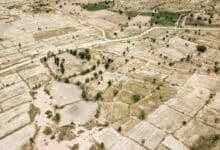Thailand’s eastern corridor factories prepared for drought season

Factories within Thailand’s Eastern Economic Corridor (EEC) are poised to weather an impending drought season, thanks to preventative measures undertaken by the Industrial Estate Authority of Thailand (IEAT). The EEC, which encompasses sections of Chon Buri, Rayong and Chachoengsao, is home to 41 industrial estates and 6,000 factories, and the daily demand for water across these establishments amounts to 1.5 million cubic metres.
The IEAT has allocated a provision of 1.18 million cubic metres to meet the water needs of these factories, according to the authority’s governor, Veeris Ammarapala. This supply is supplemented by the acquisition of raw water from various companies and the implementation of wastewater retreatment procedures, enabling the reuse of water.
Furthermore, the IEAT has established water reserves totalling 1.6 million cubic metres, sourced from the Nam Hu and Tubma canals. The EEC region also boasts four reservoirs, with the current capacity of raw water standing at 52% of the total, said Veeris Ammarapala.
“Authorities are confident that factories, the agricultural sector, and the general populace will have access to sufficient water until the commencement of the rainy season, expected between May and June.”
To further stave off the detrimental effects of drought on business proceedings, the IEAT has introduced various measures, centred around the principles of the 3Rs – reduce, reuse and recycle – within the industrial estates.
The threat of prolonged drought carries significant economic implications for the country, including an anticipated decrease in GDP, along with negative impacts on manufacturing, exports, and the agricultural sector due to diminished production capacity.
The government has forecasted a 24% decrease in average rainfall across Thailand for 2024, compared to standard levels. The previous year saw the drought crisis severely affect Thailand’s rainfall, resulting in a 40% decrease. The Eastern region, in particular, experienced an even steeper decline of approximately 60%.
According to the Joint Standing Committee on Commerce, Industry and Banking, this drought led to a 5.94% decrease in Thailand’s industrial GDP in 2020 and a 4.12% fall in 2021, reported Bangkok Post.
Latest Thailand News
Follow The Thaiger on Google News:


























